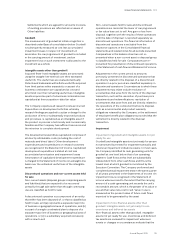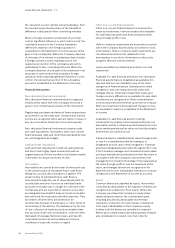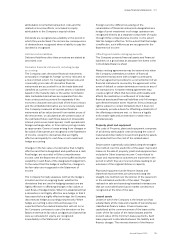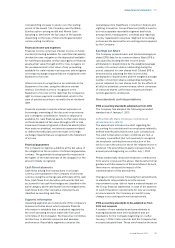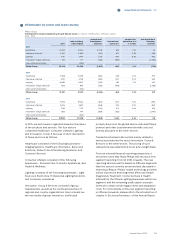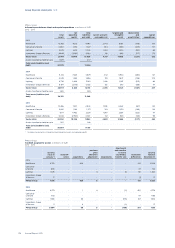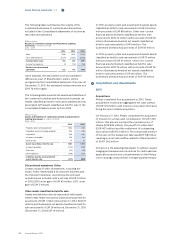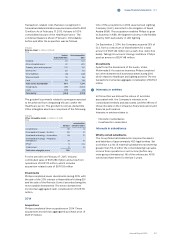Philips 2015 Annual Report Download - page 122
Download and view the complete annual report
Please find page 122 of the 2015 Philips annual report below. You can navigate through the pages in the report by either clicking on the pages listed below, or by using the keyword search tool below to find specific information within the annual report.Group nancial statements 12.9
122 Annual Report 2015
relevant to the Company are set out below. Changes to
other standards, following from amendments and the
annual improvement cycles, are not expected to have
a material impact on the Company’s nancial
statements.
IFRS 9 Financial Instruments
IFRS 9 Financial Instruments brings together the
classication and measurement, impairment and hedge
accounting phases of the IASB’s project to replace IAS
39 Financial Instruments: Recognition and
Measurement.
IFRS 9 adds a new expected loss impairment model
and amendments to classication and measurement
for nancial assets. The impairment model is based on
the concept of providing for expected losses at
inception of a contract, except in the case of purchased
or originated credit-impaired nancial assets, where
expected credit losses are incorporated into the
eective interest rate.
The standard supersedes all previous versions of IFRS
9 and is eective for periods beginning on or after
January 1, 2018. It is not yet endorsed by the EU. The
Company is currently in the process of assessing the
impact of the new Standard.
IFRS 15 Revenue from Contracts with Customers
IFRS 15 species how and when revenue is recognized
as well as describes more informative and relevant
disclosures. The standard supersedes IAS 18 Revenue,
IAS 11 Construction Contracts and a number of revenue-
related interpretations.
The new standard provides a single, principles based
ve-step model to be applied to all contracts with
customers. Furthermore, it provides new guidance on
whether revenue should be recognized at a point in
time or over time. The standard also introduces new
guidance on costs of fullling and obtaining a contract,
specifying the circumstances in which such costs
should be capitalized. Costs that do not meet the
criteria must be expensed when incurred.
IFRS 15 must be applied for periods beginning on or
after January 1, 2018. It is not yet endorsed by the EU.
The Company is currently assessing the impact of the
new standard.
IFRS 16 Leases
For lessees, IFRS 16 (issued on January 13, 2016)
requires most leases to be recognized on-balance
(under a single model), eliminating the distinction
between operating and nance leases. Lessor
accounting however remains largely unchanged and
the distinction between operating and nance leases is
retained. IFRS 16 supersedes IAS 17 Leases and related
interpretations.
Under IFRS 16 a lessee recognizes a right-of-use asset
and a lease liability. The right-of-use asset is treated
similarly to other non-nancial assets and is
depreciated accordingly. The lease liability is initially
measured at the present value of the lease payments
payable over the lease term, discounted at the rate
implicit in the lease if that can be readily determined,
and the liability accrues interest. As with current IAS 17,
under IFRS 16 lessors classify leases as operating or
nance in nature.
IFRS 16 must be applied for periods beginning on or
after January 1, 2019, with earlier adoption permitted if
abovementioned IFRS 15 has also been applied. IFRS
16 is not yet endorsed by the EU. The Company is
currently assessing the impact of the new standard.





